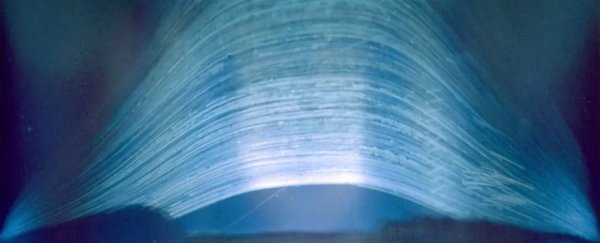Eight years and one month ago, a Master of Fine Art student at the University of Hertfordshire fitted a beer can with photographic paper and created a low-tech pinhole camera. She then placed the can on a telescope at the university's Bayfordbury Observatory and eventually forgot about the project.
Now, the resulting photograph has been rediscovered – and it may be the longest-exposure photo ever taken.
"I had tried this technique a couple of times at the Observatory before, but the photographs were often ruined by moisture and the photographic paper curled up," photographer Regina Valkenborgh, now a photography technician at Barnet and Southgate College, said in a statement. "I hadn't intended to capture an exposure for this length of time and to my surprise, it had survived."
The photograph shows the Sun's journey through the sky since 2012; 2,953 arcs of light tracing its path as the Sun rose and set. Part of the telescope's dome is also visible at the left of the photograph. On the right is a gantry structure designed to straddle the observatory, which was built halfway through the exposure.
Prior to this photo, the longest-exposure picture was thought to be four years, eight months, taken by German artist Michael Wesely, according to the university. Wesely takes long-exposure photographs of various scenes, such as the renovation of the Museum of Modern Art (MOMA) in New York City.
Long-exposure photography requires very small apertures, or openings in the camera lens, in order not to flood the photographic paper with light. The beer-can camera is a type of pinhole camera, a very simple device without any lens at all.
Light enters through the only opening in the camera – the pinprick-sized hole – and falls on photosensitive paper inside. This creates an inverted image of whatever the camera "sees".
Because of the long exposure time, only slow-moving or permanent objects appear in the resulting image; fast-moving objects are lost.
Valkenborgh's image was rediscovered by the Bayfordbury Observatory's principal technical officer, David Campbell, who found and removed the unassuming beer can from the telescope.
"It was a stroke of luck that the picture was left untouched, to be saved by David after all these years," Valkenborgh said.
This article was originally published by Live Science. Read the original article here.
